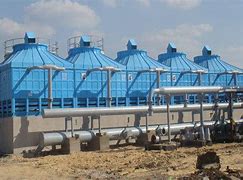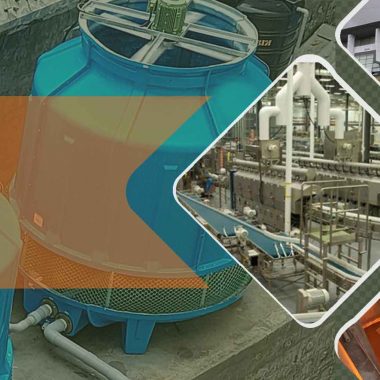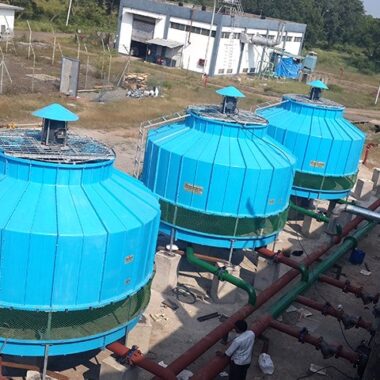Design and Features of Multicell Cooling Towers
Design and Features of Multicell Cooling Towers
Multicell cooling towers are progressed cooling systems outlined to proficiently dissipate heat from industrial processes or HVAC systems. These towers comprise of multiple cells, each containing heat exchange components such as fill media, fans, and drift eliminators. Design and Features of Multicell Cooling Towers: Here are the key plan aspects and features of multicell cooling towers:
1) Modular Design:
Multicell cooling tower are characterized by a modular plan, allowing for the assembly of multiple cells in parallel. This secluded arrangement offers scalability and flexibility to accommodate varying cooling requirements and future expansion needs.
2) Parallel Operation:
Each cell operates independently but in parallel with other cells inside the tower. This parallel operation permits for productive heat dissipation whereas giving redundancy and reliability. If one cell requires support or experiences issues, the other cells can continue to operate, ensuring uninterrupted cooling.
3) Integrated Components:
Each cell regularly includes integrated components such as fill media, distribution systems, fan assemblies, drift eliminators, and water collection bowls. These components work together to facilitate the heat exchange handle efficiently.
4) Fill Media:
Multicell cooling tower utilize fill media inside each cell to maximize the contact surface area between the air and water streams. Common fill media sorts include splash fill, film fill, or a combination of both, depending on the specific cooling requirements and water quality considerations.
5) Fan Assemblies:
Fan assemblies are introduced within each cell to actuate air circulation and upgrade the heat transfer handle. These fans are typically prepared with variable frequency drives (VFDs) to alter fan speed based on cooling demand, optimizing energy efficiency and minimizing operating costs.
6) Drift Eliminators:
Drift eliminators are installed at the top of each cell to capture water droplets entrained within the air stream and prevent their escape into the atmosphere. This helps minimize water loss and guarantees compliance with environmental regulations.
7) Distribution Systems:
Each cell is prepared with a distribution system to evenly distribute water over the fill media. Proper water distribution is essential for maximizing heat transfer efficiency and preventing dry spots inside the tower.
8) Structural Support:
Multicell cooling tower are constructed with a strong structural system to support the weight of multiple cells, fans, and other components. The structural plan ensures stability, durability, and resistance to environmental forces such as wind loads.
9) Control and Monitoring Systems:
Advanced multicell cooling tower are prepared with control and monitoring systems to regulate water flow, fan speed, and other operating parameters. These systems give real-time information on temperature, weight, and energy utilization, enabling efficient operation and proactive maintenance.
10) Corrosion Resistance:
Multicell cooling towers are often constructed from corrosion-resistant materials such as fiberglass-reinforced plastic (FRP), stainless steel, or galvanized steel. These materials give durability and longevity, even in harsh industrial situations.
In summary, multicell cooling towers offer proficient, reliable, and customizable cooling solutions for a wide run of applications. Their modular plan, parallel operation, integrated components, and progressed features make them well-suited for requesting cooling necessities in industrial processes, power plants, HVAC systems, and other applications.





Learn about Multicell Cooling Towers - Cool Fab Equipments March 21, 2024 at 7:42 pm
[…] Multicell cooling towers are commonly utilized in oil refining, petrochemical, and power-generation facilities to effectively dissipate heat created by different industrial processes. These towers comprise of different cells, each prepared with heat exchange components such as fill media, fan assemblies, and drift eliminators. Here’s learn about how multicell cooling towers are utilized in these businesses: […]